Role Italian Politician Preceded by Giovanni Leone Name Aldo Moro | ||
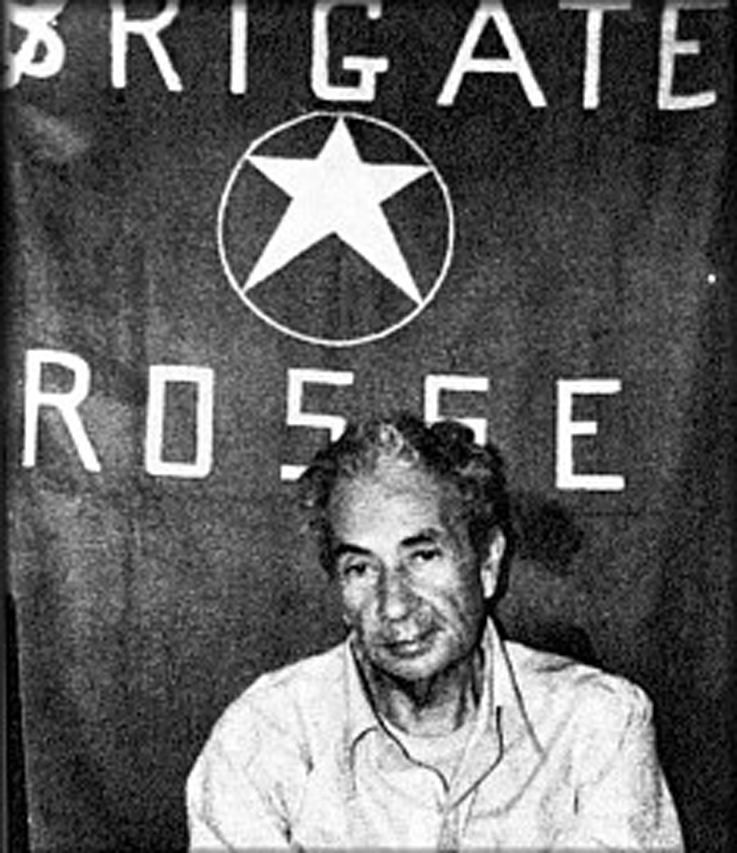 | ||
President Antonio SegniGiuseppe Saragat Spouse Eleonora Chiavarelli (m. 1945–1978) Children Giovanni Moro, Maria Fida Moro, Agnese Moro, Anna Moro Similar People | ||
Parents Renato Moro, Fida Sticchi | ||
SYND 1 5 76 ITALIAN PREMIER ALDO MORO RESIGNS
Aldo Romeo Luigi Moro ([ˈaldo ˈmɔːro]; 23 September 1916 – 9 May 1978) was an Italian statesman and politician, and a prominent member of the Christian Democracy party. He served as 38th Prime Minister of Italy, from 1963 to 1968, and then from 1974 to 1976. He was one of Italy's longest-serving post-war Prime Ministers, holding power for a combined total of more than six years; due to his accommodation with the Communist leader Enrico Berlinguer, known as Historic Compromise, Moro is widely considered one of the most prominent fathers of the Italian centre-left and one of the greatest and most popular leaders in the history of the Italian Republic.
Contents
- SYND 1 5 76 ITALIAN PREMIER ALDO MORO RESIGNS
- Euronews interview the truth about aldo moro s murder
- Early career
- Political activities
- Historic compromise
- Kidnapping
- Negotiations
- Captivity letters
- Murder
- Antonio Negris 1979 arrest and release
- Alternative points of view about Moros death
- Sacrifice Aldo Moro to maintain the stability of Italy
- Possible beatification
- Cinematic adaptations
- References
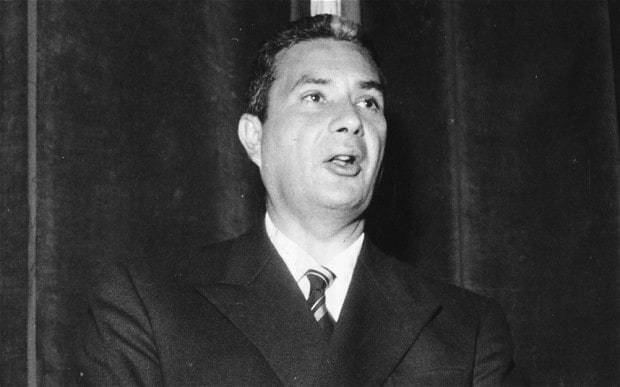
A leader of Christian Democracy (Democrazia Cristiana, DC), Moro was considered an intellectual and a patient mediator, especially in the internal life of his party. He was kidnapped on 16 March 1978 by the Red Brigades and killed after 55 days of captivity.
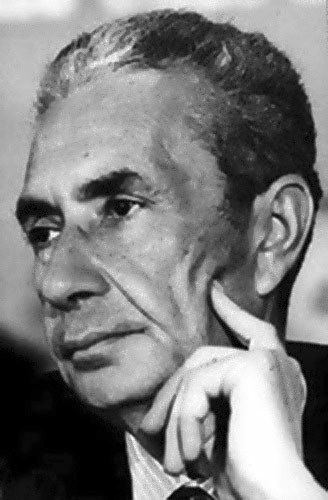
Euronews interview the truth about aldo moro s murder
Early career
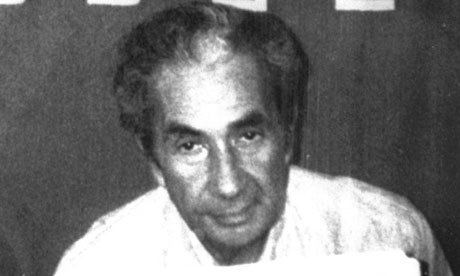
Moro was born in Maglie, in the province of Lecce (Apulia), into a family from Ugento. At age 4, he moved with his family to Milan, but they soon moved back to Apulia, where he gained a classical high school degree at Archita lyceum in Taranto. Until 1939, he studied Law at the University of Bari, an institution where he was later to hold the post of ordinary professor (equivalent to a tenured, full professor in the U.S. academic system) of philosophy of Law and Colonial Policy (1941) and of Criminal Law (1942).
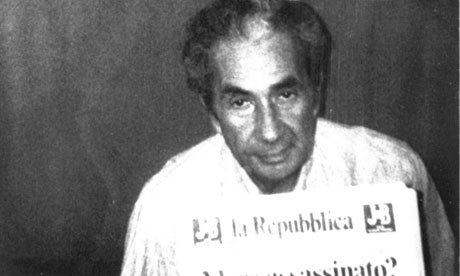
In 1935, he joined the Catholic university students' association (Federazione Universitaria Cattolica Italiana) of Bari. In 1939, under approval of Giovanni Battista Montini whom he had befriended, Moro was chosen as president of the association; he kept the post till 1942, succeeded by Giulio Andreotti. During his university years, Italy was under the Fascist government, and he took part in students competitions (Littoriali della cultura e dell'arte) organised by local fascist students' organisation (Gioventù Universitaria Fascista). He then founded the periodical La Rassegna, published in 1943–1945.
In 1945, he married Eleonora Chiavarelli (1915–2010), with whom he had four children: Maria Fida (born 1946), Agnese (1952), Anna, and Giovanni (1958).
Political activities
Moro developed his interest in politics between 1943 and 1945. Initially, he seemed to be very interested in the social-democratic component of the Italian Socialist Party, but then his Catholic faith moved him towards the newly constituted Democrazia Cristiana (DC). In the DC, he took part in the work of the leftist trend, headed by Giuseppe Dossetti. In 1945 he became director of the magazine Studium and president of the Graduated Movement of the Azione Cattolica.
In 1946, he was nominated vice-president of the Democrazia Cristiana and elected member of the Constitutional Assembly, where he took part in the work to redact the Italian Constitution. In 1948 he was elected to the Italian Parliament and nominated vice-minister of Foreign Affairs in the 5th De Gasperi cabinet (23 May 1948 – 27 January 1950).
In 1953 Moro, was re-elected to the Italian Chamber of Deputies, where he held the position of chairman of the DC parliamentary group. He was chosen as Minister of Grace and Justice in the Antonio Segni 1st cabinet in 1955.
Minister of Education in the following Adone Zoli and Amintore Fanfani-II cabinets, he introduced civic education into the national curriculum. In 1959, at the 6th party's congress he gained the post of National Secretary of the DC.
In 1963, he was nominated Prime Minister of Italy for the first time. His government was unevenly supported by the DC, but also by the Italian Socialist Party, along with the minor Italian Republican Party and Italian Democratic Socialist Party. The centre-left coalition, a first for the Italian post-war political panorama, stayed in power until the 1968 general elections. His 3rd cabinet (1966–68) stayed in power for 833 days, a record for Italy's so-called "First Republic".
In the 1968 DC's congress, Moro yielded the Secretariat and passed to internal opposition, while serving as Foreign Minister between 1969 and 1974. From 1974 to 1976, he re-gained the post of Prime Minister, and concluded the Osimo Treaty with Yugoslavia, defining the official partition of the Free Territory of Trieste. In 1976 he was elected President of the DC National Council.
A wide range of social reforms were carried out during Moro's periods as prime minister. The 1967 Ponte Law (Legge Ponte) introduced urgent housing provisions as part of an envisioned reform of the entire sector, such as the introduction of minimum standards for housing and environment. A law promulgated on 14 December 1963 introduced an annual allowance for university students with income below a given level. Another law, promulgated on 10 March 1968, introduced voluntary public pre-elementary education for children aged three to five years. A law promulgated on 21 July 1965 introduced new pension provisions under the general scheme. The legal minima was raised, all current pensions were revalued, seniority pensions (pensioni d’anzianità) were introduced (after 35 years of contributions workers could retire even before attaining pensionable age), and within the national social security institution (Istituto nazionale della previdenza sociale), a Social Fund (Fondo Sociale) was established, ensuring to all members pensioners a basic uniform pension largely financed by state, known as the social pension (not related to the later social pension introduced in 1968). A law of 22 July 1966 extended pension insurance to small traders. A law of 22 July 1966 extended health insurance to retired traders, and a law of 29 May 1967 extended compulsory health insurance to retired farmers, tenant farmers, and sharecroppers, and extended health insurance to the unemployed in receipt of unemployment benefits. A law of 18 March 1968 introduced the principle of earnings-related pensions within the general scheme, with the pension formula to equal 1.626% of average earnings in the last 3 years of work multiplied by the number of contribution years (maximum pension: 65% of previous earnings) up to 40. A law of 5 November 1968 extended family allowances to the unemployed in receipt of unemployment benefits.
A law of 9 June 1975 increased the number of eligible occupational diseases and extended the duration of benefits. A law of 3 June 1975 introduced various benefit improvements for pensioners. The multiplying coefficient was raised to 2% and applied to average earnings of the best 3 years in the last 10 years of work, and automatic annual adjustment of minimum pensions to increase of the minimum contractual wage in the industrial sector (with a smaller adjustment made for pensions higher than the minima). A law of 27 December 1975 introduced ad hoc upgrading of cash benefits for certain diseases and of all flat-rate allowances. A law of 14 July 1967 extended family allowances to self-employed farmers, sharecroppers, and tenant farmers. On 29 April 1976, pension linkage to the industrial wage was extended to civil servants.
Historic compromise
Moro was considered a very tenacious mediator, particularly skilled in coordinating the different internal trends of DC.
At the beginning of the 1960s, Moro was one of the most convinced supporters of an alliance between the DC and the Italian Socialist Party, in order to widen the majority and integrate the socialists in the government system. In the 1963 party congress in Naples, he was able to convince the whole party directive of the strategy. The same happened in 1978, when he supported a "national solidarity" government with the backing of the Italian Communist Party.
Moro's main aim was to widen the democratic base of the government: the cabinets should have been able to represent a bigger number of voters and parties. He thought of the DC as the fulcrum of a coalition system, on the principles of consociative democracy.
Moro faced big challenges, especially, the necessity to conciliate the Christian and popular mission of the Democrazia Cristiana with the rising laicist and liberal values of the Italian society in the 1960s, and the necessity to integrate new important social groups (youth, women, workers) in the democratic system. DC's mission, in Moro's vision, was intended to recover the popular class that supported Fascism and ferry them in the democratic system. The contradiction of Moro's political stance was in trying to reconcile the extreme mobility of social transformations with the continuity of the institutions of representative democracy, and the integration of the masses in the State, without falling into autocracy.
Following the Hungarian Revolution of 1956, the Italian Socialist Party had taken a definitive distance from the Italian Communist Party, and Pietro Nenni had collaborated with the DC in the early 1960s. After the rise of the Italian Communist Party of Enrico Berlinguer at the 1976 general elections, when the Communists scored 34,4% of the votes, Moro conceived the idea of a "national solidarity" cabinet, whose parliamentary base should include the Italian Communist Party as well. Moro's idea was openly criticised, as such an "Historic Compromise" would have involved an Italian Communist Party which was still under direct influence from Moscow. Berlinguer openly defused the proposition.
In 1976–1977, Berlinguer's Italian Communist Party broke with Moscow, and convened with the Spanish and French parties to draw the lines of Eurocommunism. Such a move made an eventual collaboration more acceptable for DC voters, and the two parties began an intense parliamentary debate, in a moment of deep social crises.
In 1977, Moro was personally involved in international disputes. He strongly defended Mariano Rumor during the parliamentary debate on the Lockheed scandal, and some in the press reported that he might have been "Antelope Cobbler", an alleged bribe recipient. The accusation, aimed at politically destroying Moro and avoiding the risk of a "Historic Compromise" cabinet, failed when Moro was cleared on March 3, 1978, 13 days before his kidnapping.
The early-1978 proposition by Moro of a Christian Democracy-Italian Socialist Party cabinet supported also by the Italian Communist Party was strongly opposed by both super-powers. The United States feared that the collaboration of an Italian government with the Communists might have allowed these later to gain information on strategic NATO military plans and installations, and pass them to Soviet agents. Moreover, the participation in government of the Communists in a Western country would have represented a cultural failure for the USA. The Soviets considered potential participation by the Italian Communist Party in a cabinet a form of emancipation from Moscow and rapprochement to the Americans, therefore also opposing it.
Kidnapping
On 16 March 1978, on Via Fani, a street in Rome, a unit of the militant far-left organisation known as the Red Brigades (Italian: Brigate Rosse) blocked the two-car convoy transporting Moro and kidnapped him, murdering his five bodyguards. At the time, all of the founding members of the Red Brigades were in jail; therefore, the organisation led by Mario Moretti that kidnapped Moro is said to be the "Second Red Brigades".
On the day of his kidnapping, Moro was on his way to a session of the Chamber of Deputies, where a discussion was to take place regarding a vote of confidence for a new government led by Giulio Andreotti (DC) that would have, for the first time, the support of the Communist Party. It was to be the first implementation of Moro's strategic political vision as defined by the Compromesso storico (historic compromise).
In the following days, trade unions called for a general strike, while security forces made hundreds of raids in Rome, Milan, Turin, and other cities searching for Moro's location. Held for two months, he was allowed to send letters to his family and politicians. The government refused to negotiate, despite demands by family, friends and Pope Paul VI. In fact, Paul VI "offered himself in exchange ... for Aldo Moro".
During the investigation of Moro's kidnapping, General Carlo Alberto Dalla Chiesa reportedly responded to a member of the security services who suggested torturing a suspected brigatista, "Italy can survive the loss of Aldo Moro. It would not survive the introduction of torture." The Red Brigades initiated a secret trial where Moro was found guilty and sentenced to death. Then they sent demands to the Italian authorities, stating that unless 16 Red Brigades prisoners were released, Moro would be killed. The Italian authorities responded with a large-scale manhunt.
Negotiations
The Red Brigades proposed to exchange Moro's life for the freedom of several prisoners. There has been speculation that during his detention many knew where he was (in an apartment in Rome). When Moro was abducted, the government immediately took a hard line position: the "State must not bend" on 'terrorist demands'. Some contrasted this with the kidnapping of Ciro Cirillo in 1981, a minor political figure for whom the government negotiated. However, Cirillo was released for a monetary ransom, rather than the release of the imprisoned extremists.
Romano Prodi, Mario Baldassarri, and Alberto Clò, of the faculty of the University of Bologna passed on a tip about a safe-house where the Red Brigades might have been holding Moro on 2 April. Prodi claimed he had been given the tip by the founders of the Christian Democrats, from beyond the grave in a séance and a Ouija board, which gave the names of Viterbo, Bolsena and Gradoli.
Captivity letters
During this period, Moro wrote several letters to the leaders of the Christian Democrats and to Pope Paul VI, who later personally officiated in Moro's Funeral Mass. Those letters, at times very critical of Andreotti, were kept secret for more than a decade, and published only in the early 1990s. In his letters, Moro said that the state's primary objective should be saving lives, and that the government should comply with his kidnappers' demands. Most of the Christian Democrat leaders argued that the letters did not express Moro's genuine wishes, claiming they were written under duress, and thus refused all negotiation. This was in stark contrast to the requests of Moro's family. In his appeal to the terrorists, Pope Paul asked them to release Moro "without conditions".
Murder
When the Red Brigades decided to murder Moro, they placed him in a car and told him to cover himself with a blanket saying that they were going to transport him to another location. After Moro was covered they shot him ten times. According to the official reconstruction after a series of trials, the killer was Mario Moretti. Moro's body was left in the trunk of a red Renault 4 on Via Michelangelo Caetani towards the Tiber River near the Roman Ghetto.
After the recovery of Moro's body, the Minister of the Interior Francesco Cossiga resigned.
Antonio Negri's 1979 arrest and release
On 7 April 1979, Marxist philosopher Antonio Negri was arrested along with other leaders of Autonomia Operaia (Oreste Scalzone, E. Vesce, A. Del Re, L. Ferrari Bravo, Franco Piperno and others). Pietro Calogero, an attorney close to the Italian Communist Party, accused the Autonomia group of masterminding left-wing terrorism in Italy. Negri was charged with a number of offences including leadership of the Red Brigades, being behind Moro's kidnapping and murder, and plotting to overthrow the government. A year later, he was found innocent of Moro's murder.
In 2003, Alexander Stille accused Negri of bearing moral but not legal responsibility for the crimes, citing Negri's words from one year later:
Every action of destruction and sabotage seems to me a manifestation of class solidarity.... Nor does the pain of my adversary affect me: proletarian justice has the productive force of self-affirmation and the faculty of logical conviction.
and
The antagonistic process tends toward hegemony, toward the destruction and the annihilation of the adversary.... The adversary must be destroyed.
Alternative points of view about Moro's death
Left wing writers have accused the United States as responsible for Moro's death. The "Gladio network", directed by NATO, has also been accused. Historian Sergio Flamigni, a member of the Communist Refoundation Party, believes Moretti was used by Gladio in Italy to take over the Red Brigades and pursue a strategy of tension.
In Red Brigades member Alberto Franceschini's book, and finally acquitted by the Supreme Court of Cassation in 2003.
"Sacrifice Aldo Moro to maintain the stability of Italy"
Steve Pieczenik, a former member of the U.S. State Department sent by President Jimmy Carter as a "psychological expert" to integrate the Interior Minister Francesco Cossiga's "crisis committee", was interviewed by Emmanuel Amara in his 2006 documentary Les derniers jours d'Aldo Moro ("The Last Days of Aldo Moro"), in which he alleged that: "We had to sacrifice Aldo Moro to maintain the stability of Italy."
He alleged that the U.S. had to "instrumentalize the Red Brigades," and that the decision to have him killed was taken during the fourth week of Moro's detention, when he started revealing state secrets through his letters (allegedly the existence of Gladio). Francesco Cossiga also said the "crisis committee" also leaked a false statement, attributed to the Red Brigades, saying that Moro was dead.
Possible beatification
According to media reports on 26 September 2012, the Holy See has received a file on beatification for Moro. Beatification is the first step to becoming a saint in the Roman Catholic Church. Nicola Giampaolo serves as the postulator for the cause.
In April 2015, it was reported that controversies around Moro could cause the suspension or closing of the cause. The postulator has stated the cause will continue when the discrepancies are cleared up. The halting of proceedings was due to Antonio Mennini - the priest who heard his last confession - being allowed to provide a statement to a tribunal in regards to Moro's kidnapping and confession. The cause was able to resume its initial investigations following this.
Cinematic adaptations
A number of films have portrayed the events of Moro's kidnapping and murder with varying degrees of fictionalization including the following:
